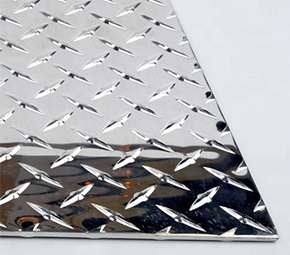.jpg) Plain Al Foil 9µm To Be Used For Lamination
Plain Al Foil 9µm To Be Used For Lamination
The final annealing after the aluminum foil is rolled to the thickness of the finished product is called finish annealing. The purpose of finish annealing is to obtain the internal structure and mechanical properties of soft products and products in various states that meet the standards and meet the requirements of users. When finishing annealing, the annealing process parameters (heating rate, heating temperature, holding time, cooling rate, etc.) must be strictly controlled to ensure the mechanical properties of the foil and the degreasing effect on the surface. Most aluminum foil products need to be finished annealing (250℃一250℃). Incubate at 400°C for 10-80 hours). At present, the detection of the degreasing effect of the aluminum foil surface in the aluminum foil industry is mainly determined by the water brush test (ys/t455.4-2003), that is, use a cotton ball dipped in steamed water to brush the surface along the width direction of the aluminum foil, and then Observe the streamline shape of the test solution on the aluminum foil at an angle of 30°-50° (in the vertical direction). If the test solution is streamlined and the wetted area does not shrink, it indicates that the surface of the tested aluminum foil has a good degreasing effect. Namely "A grade; if the test solution shrinks significantly or continues to be in the shape of a small ball, it indicates that the surface degreasing effect of the tested aluminum foil is not good, that is, "B" grade. A and B are the characteristics and quality requirements of aluminum foil for flexible packaging. Other grades Cannot be used for soft bag compounding.
At present, users have higher and higher requirements for the surface quality of aluminum foil, requiring a smooth and clean surface, free of oil, roller holes, roller marks, and fewer pinholes. Therefore, the control of surface quality has become more and more important for aluminum foil production. The geometric dimensions of aluminum foil include width, thickness, length, roll diameter, etc., among which thickness control is also one of the core technologies of foil production
Refined aluminum foil is divided into five categories:
Embossed aluminum foil: aluminum foil products with various patterns on the surface.
Laminated aluminum foil: It can be divided into sticker aluminum foil and plastic aluminum foil. Use dry or wet methods to paste aluminum foil and paper or other materials into an integrated product.
Printed aluminum foil: products printed on the surface of aluminum foil with different colors and plates.
Coated aluminum foil: products that are processed by coating the surface of aluminum foil with lacquer or other coatings.
Composite aluminum foil: a product made by combining two or more of the above-mentioned refined aluminum foil processing methods.
Flexible Packaging Aluminium Foil Grade 1235 O aluminum foil Aluminum foil with an aluminum content of not less than 99.35%.





